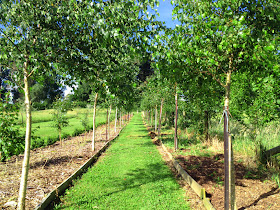I feel certain that this year, like the last, will be full of new stories. Some to be blogged, some to be kept private, some to share with family and to be celebrated, some to be forgotten with shame.
Alas, I don't know in what form these stories will present themselves; nor in what measures there will be joy or pain. The only hope I have is that my part in them will be good: I don't mean I wish to be the protagonist or hero, I mean that I hope when I reflect upon the stories in years to come my character was at least kind, or noble; was able to make the best of any situation.
HM The Queen in this year's Christmas message encouraged the practice of reflection upon One's life and One's circumstances. Indeed it is important to analyse what One did right and would do again, and what One did wrong; and thus how One would do it differently next time.
For me each year, between Boxing Day and New Year's Eve, it is time to reflect upon and write anew my new year's resolutions. I have been keeping new year's resolutions every year since I was sixteen. Much like my usual 'to do' lists (I'm a big fan of lists), nothing ever leaves the new year's resolution list unless it has been achieved. This is not to say that I achieve everything I set out to every year, but if not it gets rolled-over onto the next year's list. And it stays that way until I can cross it off one way or another. Looking back at last year's has proved satisfactory, but there are still quite a few things being rolled over this year and likely to be rolled over the year after next as well (for instance, there are no fencing classes in Dubbo for me to learn the ancient art of swordsmanship!).
There is also, however, the Edna Mode philosophy: not to spend so much time worrying about what One could have done after the event that you fail to pay enough attention to the opportunities around you in the here and now.
Better, I think, at this time to be like the Roman god Janus, to have the wisdom to reflect on the past, learn from mistakes and ensure that no matter what life deals you you don't make the same bad decision more than once; whilst at the same time looking forward, seeking opportunities and squeezing the most out of every one that comes along - because every opportunity has an expiry date.
faber est suæ quisque fortunae
- every man is the architect of his own fortune.











.jpg)










































